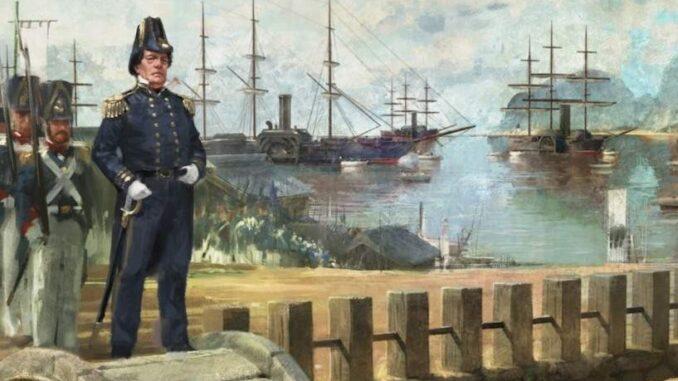
Vicky 3 is a complex game, with a lot of moving parts. Here are ten tips that should help new players and PDS veterans alike to get into the game and get a grasp on some of the core concepts & strategies.
Tips to Successful Complete Campaign
- If you have a decent surplus income you are not investing enough into your nation. The game is all about snowballing your economy, so you want to funnel every last bit of extra money into construction industries & related resource suppliers to maximize country development. Most larger nations will have plenty of pops, so Construction Points will remain the main bottleneck for development throughout the game. Academies are very expensive and provide rather low research gain, so they are not recommended until you have established your basic industry.
- Idle hands are the devil’s work. Pops that are not employed will not contribute to your economy, neither will they produce goods nor will they create demand, instead you will have to deal with welfare payments and/or unrest. On top of that unemployed pops can prevent other pops from leaving buildings when their work conditions are bad, which can cause additional unrest & economic trouble. People in subsistence farms are not great either, but at least they tend to be able to support themselves enough to not cause a lot of problems. When you get the chance later you want to make sure to use up arable land to reduce the size of the subsistence economy.
- It’s perfectly fine to run High or Very High taxes if you tax the correct things. Avoid basic needs like grain, instead go for higher SOL needs like Clothing, Services and whatever luxury goods your country can easily produce. It will push down average SOL, which means lower demand & pop growth, but that is fine since you can’t employ most of your pops early game anyway and your biggest issue is to provide enough input & consumer goods.
- In terms of laws the most important early game change should be to enable the investment pool by passing Agrarianism, Interventionism or Laissez-Faire. Passing per-capita tax will also help a lot to increase your early income. Private Health Care can help to improve pop growth and is particularly important for smaller nations with a limited worker pool. Make sure you don’t push any significantly large IGs below -10 approval with your law changes, since that will make them plot a revolution.
- In terms of techs, the most important early game techs are: Urban Planning (to enable tier II construction, which equalizes input good needs), Atmospheric Engine + Water Tube Boiler (to boost your early game mine output, so you need to spend less construction points on enabling your mining industry & create less INFRA load), Romanticism (for low-tier nations to enable Agrarianism), Colonization (if you want to colonize), Railroads (to provide INFRA for your expanding industries) and Pharmaceuticals (to enable Private Healthcare). Electricity & its related techs are another excellent early-to-mid game choice that allows you to establish highly profitable industries and boost GDP.
- Early game targets of opportunity in terms of colonization are: Oceania (lots of islands that can host ports, great way to boost trade capacity & get access to goods like coffee, sugar, and fruit), Indonesia (requires Quinine, large territory with high pop, good resources and rubber later down the line) and Hokkaido + Sakhalin (low pop count, but excellent mining capacity). East Africa is also an excellent entry point, allowing you to avoid competition with other colonizers, since you can lock down the coast pretty quickly.
- Military & Wars are very expensive, and since Construction Points are the main bottleneck during the early game, early warfare doesn’t really help with country development all that much. Better used later down the line to secure additional pops & resource deposits. To cut down on military expenses you can pass the National Militia law and rely on conscripts for country defence. This allows you to get rid of all peace time upkeep cost, without seriously reducing the capability to defend your nation. Just make sure that you have a large enough Military Industry to support the conscripts (can be left idle in peace time), and also keep in mind that you cannot demobilize conscripts during war time – so if you draft too many pops you can end up wasting a lot of money on wages & supplies.
- Use your own industry & the trade system to reduce the cost of input goods needed for the Construction Industries. Doing so will reduce the effective cost for each construction point you generate. Ideally you’d want all input goods to be in high supply/low price. Large nations usually want to import limited critical input resources like Oil, Sulphur, Rubber, Coal, Iron, Lead, Dye, Silk and the like, small nations that focus on one specific production type (e.g. Clothing) can use exports to boost the profits of their main industry by exporting the luxury products.
- Make sure you maintain INFRA & Market Access in your states. Lack of Market Access tends to severely damage the local economy, and it will also impact your national market because less goods from low-access states arrive. On top of that it will increase the costs for the local construction industry. This is why establishing railroads early on is very important. Make sure sure you have a port in every oversea holding to connect it to your National Market. Also remember that every building in a state requires INFRA, even when it is not used. If you build too many factories in a low pop state you can end up in situation where you have so high INFRA demand that the existing pops can’t produce enough INFRA in the railway, which leads to a death spiral. You can solve this issue by removing local buildings until you can meet INFRA demand again (downsize Railway accordingly if it was overbuilt as well).
- Don’t be afraid of unprofitable industries, and try to avoid subsidies at all costs. The only building that you usually want subsidized is the Railway, because its INFRA output is critical for economic health. All other buildings can be made profitable by lowering input good costs or raising output good costs (e.g. exports, higher SOL). Even if a building has low profitability, it can still be a net benefit for your country – the workers in the Fruit Orchard might be starving, but everyone else can now buy cheap fruit and get a higher SOL more easily. Railway subsidies can pile up during the mid game, a good way to avoid this is to establish lots of Mines & Plantations that use Transportation PMs. High SOL pops will also consume a lot of Transportation, so easing up a bit on taxes during the mid game to boost average SOL in the country can be better than running high / very high taxes forever.





Be the first to comment